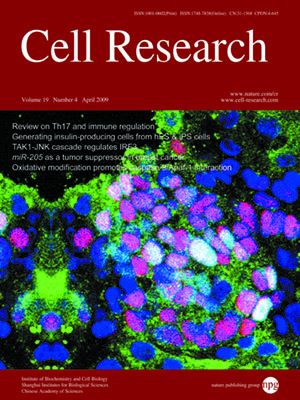
Volume 19, No 4, Apr 2009
ISSN: 1001-0602
EISSN: 1748-7838 2018
impact factor 17.848*
(Clarivate Analytics, 2019)
Volume 19 Issue 4, April 2009: 399-411
REVIEWS
More stories on Th17 cells
Alexandre S Bass1, Hilde Cheroutre2 and Daniel Mucida2
1Department of Microbiology, Immunology and Parasitology, Federal University of São Paulo - UNIFESP, São Paulo, SP, Brazil
2La Jolla Institute for Allergy and Immunology, 9420 Athena Circle, La Jolla, CA 92037, USA
Correspondence: Daniel Mucida,(mucida@liai.org )
For more than two decades, immunologists have been using the so-called Th1/Th2 paradigm to explain most of the phenomena related to adaptive immunity. The Th1/Th2 paradigm implied the existence of two different, mutually regulated, CD4
+ T helper subsets: Th1 cells, driving cell-mediated immune responses involved in tissue damage and fighting infection against intracellular parasites; and Th2 cells that mediate IgE production and are particularly involved in eosinophilic inflammation, allergy and clearance of helminthic infections. A third member of the T helper set, IL-17-producing CD4
+ T cells, now called Th17 cells, was recently described as a distinct lineage that does not share developmental pathways with either Th1 or Th2 cells. The Th17 subset has been linked to autoimmune disorders, being able to produce IL-17, IL-17F and IL-21 among other inflammatory cytokines. Interestingly, it has been reported that there is not only a cross-regulation among Th1, Th2 and Th17 effector cells but there is also a dichotomy in the generation of Th17 and T regulatory cells. Therefore, Treg and Th17 effector cells arise in a mutually exclusive fashion, depending on whether they are activated in the presence of TGF-β or TGF-β plus inflammatory cytokines such as IL-6. This review will address the discovery of the Th17 cells, and recent progress on their development and regulation.
Cell Research (2009) 19:399-411. doi: 10.1038/cr.2009.26; published online 3 March 2009
FULL TEXT | PDF
Browse 1956


